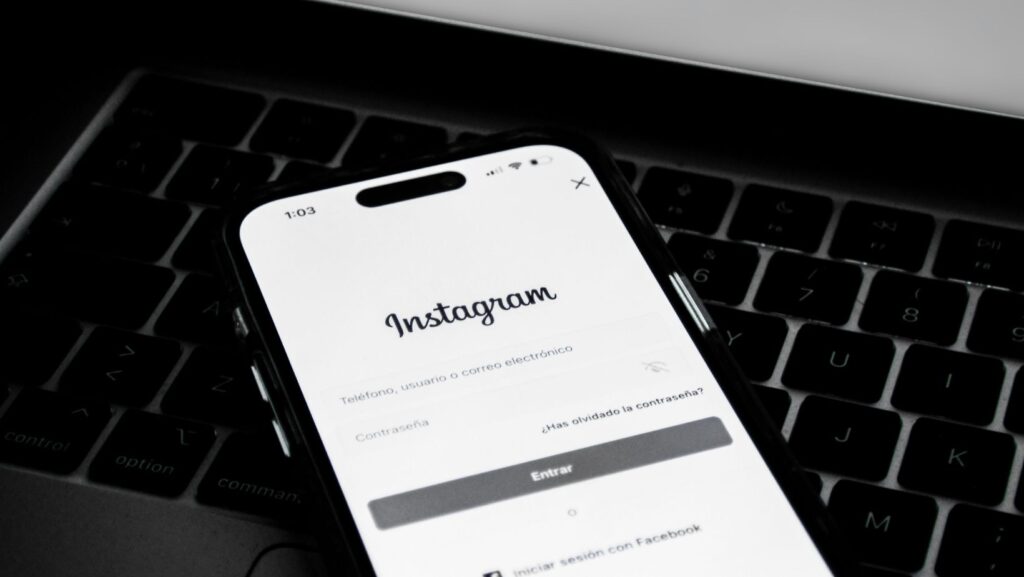
If you’ve ever wondered how successful your Instagram content truly is, follower count alone won’t give you the full story. What really matters is how much your audience interacts with your posts through likes, comments, shares, and saves.
That’s where the Instagram Engagement Rate Formula comes in.
It’s the universal equation social media managers, influencers, and brands use to measure how engaged their audience actually is.
In this guide, we’ll break down the exact formulas used to calculate engagement rate, explain how each one differs (followers-based, reach-based, and AI-weighted), and show you how to apply them step-by-step in 2025 — with real examples and insights from modern analytics tools.
Understanding Engagement Rate: The Core Metric Explained
The Instagram Engagement Rate measures how many people interact with your content compared to the number of people who see it or follow you.
Definition: The percentage of your audience that performs an action — such as liking, commenting, saving, or sharing — on a post.
This metric matters because it reflects authentic engagement, not vanity metrics.
In 2025, engagement rate is considered the gold standard for performance measurement, especially as algorithms increasingly prioritize interaction depth over raw visibility.
According to Hootsuite’s Social Trends Report 2025, accounts with high engagement rates see 35% better organic reach and 48% higher brand recall than those with average engagement.
The Standard Formula for Instagram Engagement
The most common way to calculate engagement is simple:
Engagement Rate = (Likes + Comments + Shares + Saves) ÷ Followers × 100
This formula gives a percentage representing how much of your audience actively engages with your content.
Example:
If your post receives:
- Likes: 800
- Comments: 120
- Saves: 80
- Shares: 40
- Followers: 25,000
Then:
(800 + 120 + 80 + 40) ÷ 25,000 × 100 = 4.16% Engagement Rate
That means around 4.16% of your audience interacted with your post — a solid number for most niches in 2025.
Step-by-Step: How to Calculate Engagement Rate
Let’s break down the formula step by step to make sure you can calculate it accurately for any content type.
Step 1: Gather Your Metrics
From Instagram Insights or your analytics tool, note:
- Total likes
- Total comments
- Total saves
- Total shares
- Total followers or reach
Step 2: Add Up All Engagements
Example:
Likes (700) + Comments (100) + Saves (50) + Shares (20) = 870 total interactions
Step 3: Choose Your Denominator
- Use Followers for overall account engagement
- Use Reach or Views for single post or Reels accuracy
Step 4: Apply the Formula
(870 ÷ 20,000) × 100 = 4.35% Engagement Rate
Follower-Based vs. Reach-Based Formulas (Comparison)
Different campaigns and analytics goals require different engagement formulas.
Here’s a breakdown of the two main types:
| Formula Type | Formula | Example Result | Best For |
| Follower-Based | (Likes + Comments + Shares + Saves) ÷ Followers × 100 | 4.2% | Overall account health |
| Reach-Based | (Likes + Comments + Shares + Saves) ÷ Reach × 100 | 5.6% | Post-level accuracy |
| AI-Weighted | (Interactions × Authenticity Score) ÷ Reach × 100 | 6.2% | AI-driven predictive analytics |
Follower-Based Formula
Used for general performance tracking. It shows how your total followers engage with your average content.
Best for: Comparing overall influencer or brand performance.
Reach-Based Formula
Used when analyzing single posts or campaigns. It focuses on the people who actually saw your content.
Best for: Measuring visibility-based engagement (especially Reels and paid ads).
AI-Weighted Formula
Introduced by AI analytics tools like WASK, Metricool, and Sprout Social in 2025, this approach adds an authenticity score — filtering fake likes, bots, or engagement pods.
Best for: Brands and agencies demanding accuracy and fraud detection.
Example Calculations: Posts, Reels, and Stories
Each Instagram format behaves differently. Let’s look at how the formula applies to each.
1. Feed Posts
(Likes + Comments + Shares + Saves) ÷ Followers × 100
Example:
(500 + 70 + 40 + 30) ÷ 15,000 × 100 = 4.1% Engagement
2. Reels
Reels use views instead of followers or reach, since they are algorithmically distributed.
(Likes + Comments + Saves + Shares) ÷ Views × 100
Example:
(2,000 + 300 + 150 + 200) ÷ 40,000 × 100 = 6.6% Engagement
Pro Tip: For Reels, you can factor in watch time and completion rate for deeper analysis.
3. Stories
Story engagement focuses on views, replies, and interactions (polls, shares, reactions).
(Replies + Shares + Interactions) ÷ Views × 100
Example:
(25 + 40 + 30) ÷ 3,000 × 100 = 3.16% Engagement
| Content Type | Formula | Average 2025 Engagement |
| Feed Posts | (Likes + Comments + Shares + Saves) ÷ Followers × 100 | 3%–6% |
| Reels | (Likes + Comments + Saves) ÷ Views × 100 | 5%–8% |
| Stories | (Replies + Shares) ÷ Views × 100 | 1%–3% |
AI-Weighted Engagement Formula in 2025
Artificial intelligence has revolutionized how engagement is calculated.
Instead of treating every interaction equally, AI-based systems weigh them differently according to authenticity and sentiment.
AI-Weighted Formula:
Engagement Rate = (Interactions × Authenticity Score) ÷ Reach × 100

Here’s how it works:
- Each interaction (like, comment, save) is scored for authenticity.
- Spammy or repetitive actions are filtered out.
- Sentiment analysis evaluates comment tone (positive vs. neutral).
Example:
Let’s assume:
- Total interactions: 1,200
- Reach: 18,000
- Authenticity score: 0.85
(1,200 × 0.85) ÷ 18,000 × 100 = 5.67% AI-Weighted Engagement
AI calculators can also predict performance — forecasting engagement probabilities for future posts based on previous interaction trends.
“In 2025, engagement isn’t just counted — it’s interpreted,” notes the Sprout Social Engagement Analytics Report (2025).
Which Formula Is Most Accurate and When to Use Each
| Use Case | Recommended Formula | Why |
| Account-wide insights | Follower-Based | Consistent and simple for tracking overall performance |
| Campaign or post analysis | Reach-Based | Focuses on users who actually saw the post |
| Influencer validation | AI-Weighted | Removes fake or inorganic engagement |
| Reels or Stories | Reach- or View-Based | Better reflects visibility and watch time accuracy |
HubSpot’s Social Media Benchmarks 2025 report suggests that reach-based formulas deliver up to 30% more reliable engagement data compared to follower-based ones.
Quick Rule of Thumb:
- For monthly reports: Follower-based
- For campaign performance: Reach-based
- For paid collaborations or influencer evaluation: AI-weighted
Common Mistakes When Applying the Formula
Even though the formula looks simple, several common mistakes can distort results:
1. Ignoring Content Type
You can’t compare Reels engagement to Feed Posts — the algorithms and metrics differ.
2. Mixing Paid and Organic Data
Boosted posts inflate engagement. Always separate organic and paid analytics.
3. Using Followers Instead of Reach
For post-level performance, follower count can mislead results — not every follower sees every post.
4. Overlooking Saves and Shares
Saves signal content value and often drive long-term algorithmic visibility.
5. Comparing Across Niches
A 3% engagement rate in SaaS may outperform a 5% rate in fashion.
Always benchmark within your industry.
“Engagement without context is noise,” emphasizes Later’s 2025 Benchmark Study.
Expert Insights and 2025 Benchmarks
To interpret your engagement rate accurately, it helps to know where you stand.
Below are the latest averages according to Later (2025) and Influencer Marketing Hub.
| Follower Range | Average Engagement Rate (2025) | Performance Tier |
| 1K–10K | 4.5% – 6.8% | Excellent (Micro-influencers) |
| 10K–100K | 2.5% – 4.5% | Strong |
| 100K–1M | 1.5% – 2.8% | Moderate |
| 1M+ | 0.5% – 1.3% | Low but expected |
Engagement naturally decreases as audience size grows.
Micro-influencers tend to maintain stronger, more authentic connections.
AI-Driven Trend
AI analytics now compare engagement across content types, demographics, and time frames — helping marketers identify high-performing patterns and optimize future campaigns.
WASK’s 2025 Data Science Report shows that brands integrating AI-weighted formulas improved campaign accuracy by 28% and reduced false engagement readings by 35%.
Conclusion
The Instagram Engagement Rate Formula remains the foundation of social media performance measurement.
But in 2025, it’s not just about adding up likes and comments — it’s about understanding interaction quality and authentic audience behavior.
Whether you’re using the follower-based, reach-based, or AI-weighted approach, the key is consistency and context.
When applied correctly, engagement formulas help brands and creators turn raw data into real strategy.
“The future of engagement tracking lies in hybrid analytics — where math meets meaning,” says HubSpot’s Social Analytics Team (2025).
FAQs
1. What Formula Is Used To Calculate Instagram Engagement Rate?
The standard formula is:
(Likes + Comments + Shares + Saves) ÷ Followers × 100
This gives a percentage representing the ratio of interactions to total followers.
2. What’s The Difference Between Follower-Based And Reach-Based Formulas?
Follower-based formulas use total followers as the base — ideal for account-level tracking.
Reach-based formulas divide by post reach, making them more precise for individual post or campaign analysis.
3. What’s The Most Accurate Engagement Formula In 2025?
The AI-weighted engagement formula is the most accurate in 2025.
It adjusts for fake interactions and sentiment, ensuring your engagement data reflects genuine audience activity.
Summary:
The Instagram Engagement Rate Formula has evolved.
From simple math equations to AI-powered analytics, engagement measurement now captures not just numbers — but authenticity, relevance, and community connection.



